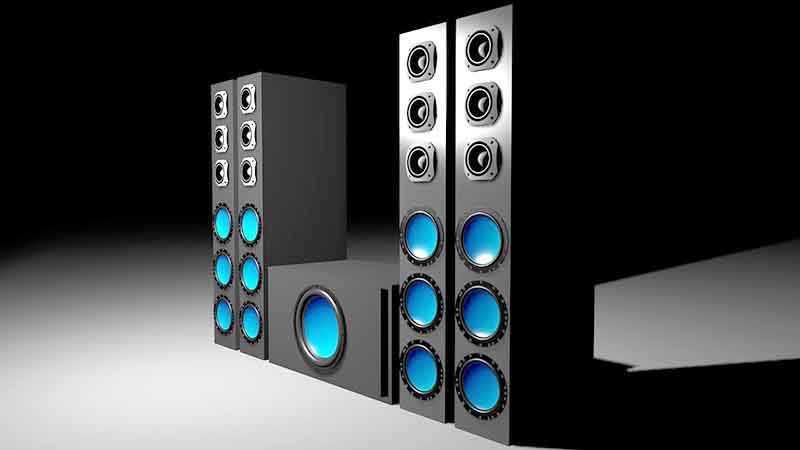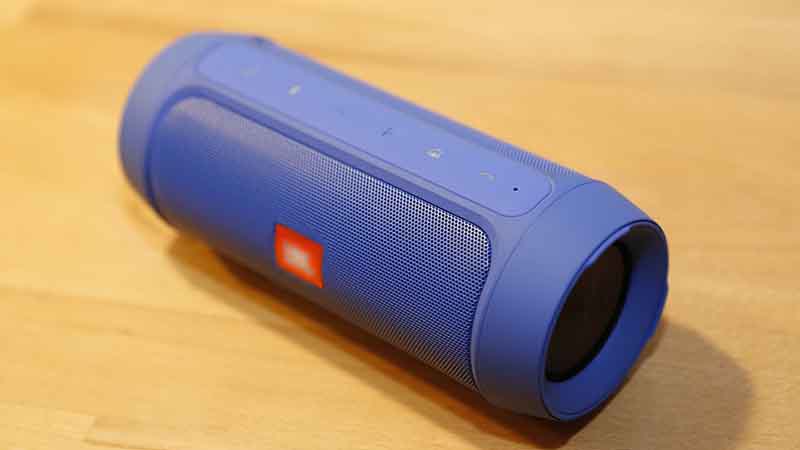People who aren’t familiar with sound systems may assume that outdoor speakers are only different than indoor speakers because of their weather-resistant properties. Since outdoor speakers may come in contact with wind, rain, and snow, it makes sense that they’d be weather-resistant in order to withstand natural environmental conditions.
However, the bigger difference between these speakers pertains to their sound quality. Indoor speakers are made to emit sounds inside of a room or building. If you tried to bring indoor speakers outside and turn them on, the sound quality would not be as good. Indoor speakers must be used in an enclosed space only.
Outdoor speakers, on the other hand, are designed to project sounds at greater distances to accommodate larger crowds of people who may be outside listening to them. Whenever you go to an outdoor concert or hear somebody give a speech outdoors, the sound of their voices and music comes from outdoor speakers.
Volume is really the key difference here. Outdoor speakers have a much higher volume than indoor speakers. If you were to use outdoor speakers inside your home, then they would probably vibrate your whole house as well as the neighbor’s house. That is why indoor speakers are designed to emit sounds at a much lower volume. When sound comes out of indoor speakers, they bounce off the walls and reflect back onto the people inside.
4 Differences
Okay, so the weather resistance and volume are the two biggest differences. Now let’s examine four other differences between indoor speakers and outdoor speakers.
1) The Bass
Bass sounds must have reflective surfaces around them. If you play bass sounds on speakers in an open area, then you won’t be able to hear them very well. You need the reflective surfaces to intensify the bass so that you can practically feel it.
For this reason, most indoor speakers will generate the best quality bass because they’re used in enclosed rooms with walls everywhere. However, some of the high-end outdoor speakers are constructed with sturdy materials that give it reflective surfaces on the inside. Outdoor events and concerts typically have these types of outdoor speakers. The bass is everything.
2) Size and Power
Outdoor speakers are made bigger and require more power because their sound output has to pass through background sounds and distractions, such as wind, traffic, gossip, commotion, etc. Sometimes an amplifier must be used in conjunction with the outdoor speakers to enhance the sound even more.
Indoor speakers don’t have any obstacles to surpass. Every home theater system and hi-fi system uses indoor speakers that are smaller and don’t require as much power. Meanwhile, the sound is more suitable for the indoors without disturbing the neighbors.
3) The Design
Outdoor speakers are designed with much more durable materials than indoor speakers. The sturdiness is necessary for the purpose of protecting the speakers from potential weather damage and to help amplify the sounds while a lot of background sounds are present.
Since no one ever pays attention to the aesthetics of outdoor speakers, the look of their design is not as impressive as indoor speakers. People often choose indoor speakers that are very stylish and accommodating to their home entertainment center.
Read also:
- 4 Different Types of Subwoofer Boxes
- How does Subwoofer Work
- The Difference between Passive Crossover vs Active Crossover
4) Sound Direction
Outdoor speakers can be described as multi-directional speakers because they can have left inputs and right inputs connected to them. This allows you to generate surround sound from your speakers so that the audience hears it coming from every direction. This is important for an outdoor crowd that is spread out all over the place.
Indoor speakers are unidirectional speakers, which means the sounds only flow in one direction. When the speakers are in an indoor environment with mostly walls around them, the sounds don’t need to spread in multiple directions. They only need to go in one direction toward the people in the room.




